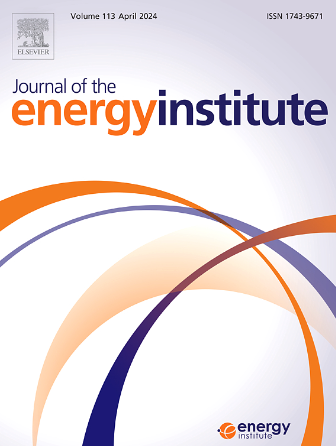Effect of flame-wall impingement on heat transfer characteristics and soot migration in methane inverse diffusion flames
IF 5.6
2区 工程技术
Q2 ENERGY & FUELS
引用次数: 0
Abstract
Flame-wall collisions are common in industrial and household applications. Therefore, it is very important to carry out detailed research of flame structure and soot generation during flame-wall impingement. In this study, the reaction characteristics and soot distribution of impinging wall flames at different equivalence ratios (λ) and impact heights (L) were studied by means of spectral diagnosis and CFD simulation. The results noted that the increase of λ causes the OH∗ peak intensities and soot concentration to rise and then decrease, reaching a maximum value at λ = 0.5. With the increase of λ, the amount of precursor polycyclic aromatic hydrocarbons (A1-A4) decreased while the soot particles growth rate increased. When λ > 0.5, the soot oxidation is faster than the soot generation, and the soot is gradually oxidized, so that the soot concentration is the highest when λ = 0.5. With the increase of L, the jet flame fully develops before the impact plate, and the flame brightness gradually increases. The increase of the L leads to a weakening of the methane-oxygen mixing and at the same time to a gradual loss of the kinetic energy of the flame along the impingement plate, which further causes an increase of the temperature and the soot content in the region where the flame jet is fully developed.
求助全文
约1分钟内获得全文
求助全文
来源期刊

Journal of The Energy Institute
工程技术-能源与燃料
CiteScore
10.60
自引率
5.30%
发文量
166
审稿时长
16 days
期刊介绍:
The Journal of the Energy Institute provides peer reviewed coverage of original high quality research on energy, engineering and technology.The coverage is broad and the main areas of interest include:
Combustion engineering and associated technologies; process heating; power generation; engines and propulsion; emissions and environmental pollution control; clean coal technologies; carbon abatement technologies
Emissions and environmental pollution control; safety and hazards;
Clean coal technologies; carbon abatement technologies, including carbon capture and storage, CCS;
Petroleum engineering and fuel quality, including storage and transport
Alternative energy sources; biomass utilisation and biomass conversion technologies; energy from waste, incineration and recycling
Energy conversion, energy recovery and energy efficiency; space heating, fuel cells, heat pumps and cooling systems
Energy storage
The journal''s coverage reflects changes in energy technology that result from the transition to more efficient energy production and end use together with reduced carbon emission.
 求助内容:
求助内容: 应助结果提醒方式:
应助结果提醒方式:


